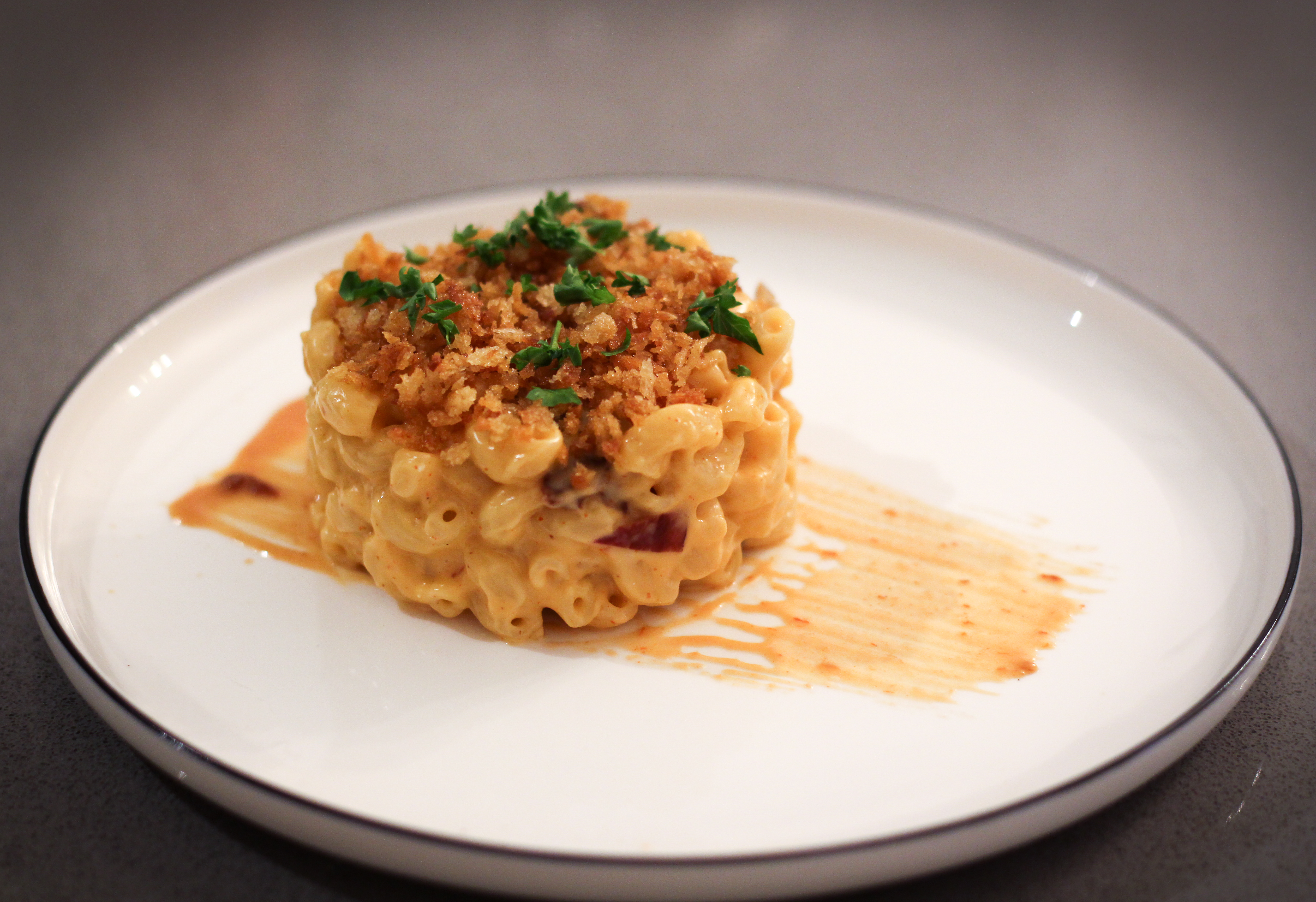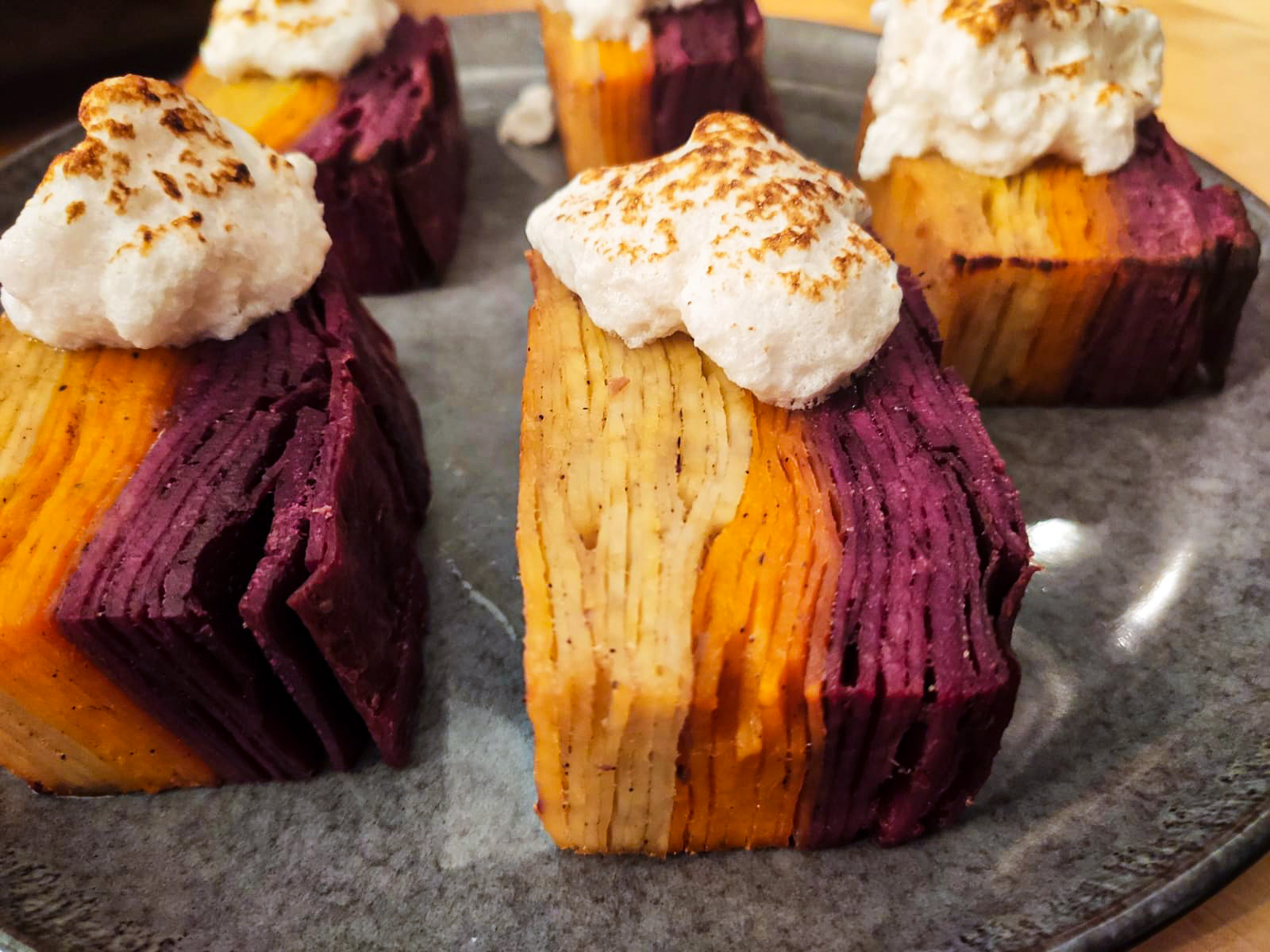
Steak with Potato & Mushroom
Ingredient
Method
Set sous vide to 136°C.
Generously season steak with salt and pepper. Place in a vacuum bag with butter, garlic, thyme, and rosemary. Seal vacuum bag and place in water bath for half an hour.
Pull steak out of the bag and pat dry.
Heat oil up in a cast iron skillet on a high heat. When oil is just beginning to smoke, place steak in the pan. Do not touch the steak until it can be pulled off of pan easily with no resistance. Flip and repeat until all sides are nice browned.
Once finished, put on a cutting board and place aluminum foil on top for about 10 minutes to rest.

Mike’s Mac & Cheese
Ingredient
Method
Add water to a pot and bring to a boil. Add plenty of salt.
Pour in pasta and cook until al dente. Drain and set pasta aside while you make the cheese sauce.
In a saucepan, melt 2 Tbsp of butter over medium low heat. When butter is melted, add in the flour and whisk to combine until it well combined and there is no more flour left. Add in milk slowly while whisking constantly. The sauce will thicken. Mix in the bay leaf, smoked paprika, sweet paprika, dijon mustard, cayenne, salt and pepper. Once well combined, pull off the heat and mix in cheese until fully melted. Place back on a low heat to keep warm while preparing the breadcrumbs.
Melt 2 Tbsp of butter in a pan over medium heat and add breadcrumbs. Stir until golden brown.
Combine cooked pasta and cheese sauce. (If adding bacon, feel free to add it here). Mix until all the pasta is well coated.
Put into bowls and top with breadcrumbs.

Tri-Coloured Sweet Potato Pavé
Ingredient
Method
Preheat the oven to 175°C. Lightly grease a 22x13cm loaf pan with olive oil and line with parchment paper, allowing 5cm of overhang on both long sides.
Whisk cream, cinnamon, salt and pepper. Set aside.
Using a mandoline, thinly slice potatoes lengthwise into 1/16-inch-thick slices. Add sweet potatoes to cream mixture; toss gently to coat. Layer potato slices in the bottom of the prepared pan, slightly overlapping to create a shingled layer, trimming potato slices if needed. Continue layering, pressing occasionally, until potatoes are about a centimeter from top of pan. Discard remaining cream and potatoes.
Fold excess parchment over potatoes, and cover pan with aluminum foil. Bake at 175°C until potatoes are tender, about 2 hours. Remove foil from pan, leaving parchment in place. Let cool for 2 hours at room temperature. Place a second 22x13cm loaf pan on top of cooled pavé in the pan, and weigh it down with unopened canned goods. Refrigerate 8 hours or overnight.
Carefully remove top pan and weights. Pour off any accumulated liquid around pavé. Invert pavé onto a cutting board; remove and discard parchment paper. Cut pavé crosswise into 8 slices. Place slices on a rimmed baking sheet, and refrigerate 20 minutes or up to 4 hours. While the pavé is in the fridge, it’s time to prepare the meringue.
In a mixing bowl–preferably stainless steel or glass–beat the egg whites and a pinch of salt using the low speed of an electric mixer until they are frothy. Add the lemon juice or white vinegar (whatever you might be using) and increase the mixer speed to medium. Continue beating until the whites are fluffy, with large bubbles forming around the edges. With the mixer running, add the sugar a few teaspoons at a time, mixing the sugar in completely before adding more. Continue until all of the sugar is incorporated. Continue beating until the peaks are firm but still glossy. Add the vanilla. Set aside.
Preheat oven to 250°F with rack in upper third of oven. Brush pavé slices generously with melted butter, and arrange in a single layer on a baking sheet. Bake until bottom edges are browned, 6 to 10 minutes.
Place a spoonful of meringue on top of each slice of pavé. If you have a torch, now is a good time to use it. If not, then go ahead and place the meringue-topped pavé in a 175°C oven for about 7 minutes or until egg whites are nicely browned. Serve and enjoy!